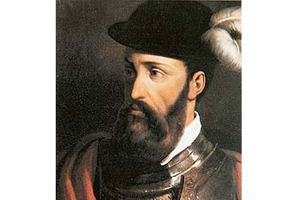Up next, we will provide a brief description of a few places of interest present in this region.
Province of Aisen
– Puerto Aisen: it is found 67 km northeast of Coihaique, on the banks of the Aisen river. Excursions set off from this city that head to the region’s main tourist destinations, such as San Rafael Lagoon National Park, lake Riesco, Chilconal hot springs, Los Palos lagoon, Puerto Chacabuco (the main regional port), among others.
– Puerto Chacabuco: it is the gateway into the region of Aisen by sea. At this place, ships and cruise ships from all over the world drop anchor. In addition, there is a constant movement of ferries that arrive from Puerto Montt and are heading to San Rafael lagoon.
– President Ibañez Bridge National Monument: it is located over the Aisen river and is formed by two 25 meter tall large metallic arches which support eight steel cables. The initiative for its construction was made by president Carlos Ibañez del Campo, yet it was erected between 1961 and 1966. It was named a National Monument in 2002.
– San Rafael Lagoon: this beautiful spot can be accessed through a spectacular boat ride that starts from Puerto Chacabuco (see hydrography and protected wild areas).
– Guaitecas: comuna (county) located on the border with the region of los Lagos and which is made up of a group of islands. The capital is Melinka (on Ascencion island), and it gets its name from the wife of German businessman Felipe Westhoff, who set up shop in the area in the mid XIX century, in order to exploit the cypress forests. Nowadays, Melinka’s main activity is gathering marine resources (sea urchins, locos, baby mussels, oysters, clams, picorocos, seaweed, fish, etc.).
– Cisnes: it is a comuna (county) located in the northern part of the region and it includes several locations, like La Junta (where the Palena and Rosselot rivers converge), Puerto Puyuhuapi (known for its old German homes, the handmade rugs and its hot springs), Gala, Gaviota (from where one can access Isla Magdalena National Park), among others. The county capital is Purto Cisnes, known for its fish skin handicrafts.
– Puyuhiapi Hot springs (Spa & Lodge): it is one of the most important thermal centers in Chile and it is located at Dorita bay in the heart of Ventisquero (213 km north of Coihaique). Its springs of thermal water come from the upwellings of Melimoyu volcano.
– National Parks: in this province, one finds Queulat, Isla Guamblin, Isla Magdalena and Laguna San Rafael (see protected wild areas).
– National Reserves: in Aisen, one finds the reserves called Lago Rosselot, Guaitecas and Rio Simpson (see protected wild areas).
– Lake Riesco: its waters are of glacial origin and are always good for sports fishing of salmon and trout (see hydrography).
– Aiken del Sur Park: it is a private 300 hectare park set along the banks of lake Riesco.
Province of Coihaique
– Coihaique: comuna (county), regional and provincial capital which is set in a valley between the Simpson and Coihaique rivers. Several recreational activities, cultural and commercial activities take place in this city.
– El Indio Stone: it is a rocky formation that has been sculpted by the water, ice and wind, giving it a human profile. It is located one kilometer east of Coihaique and is considered one of the postcard views of the city.
– Tejas Verdes: beach located on the Coihaique river (3 km from the city of the same name) that has picnic areas.
– Lakes: numerous beautiful lakes are found in this province, which are visited by aficionados of fishing, hiking and photography. A few of these lakes are the Frio, Pollux, Castor, La Paloma, Elizalde, Azul, Desierto, Caro, Verde, Atravesado, among others (see hydrography).
– El Fraile ski center: it is located 29 km from Coihaique, 1,599 masl. It has five trails set amidst lenga beech and ñirre forests.
– Lago Verde: comuna (county) made up by the towns of Lago Verde (county capital), Villa Amengual and Villa La Tapera, and the settlements of Cisnes Medio and Alto Rio Cisnes. It is the starting point for many tourist circuits.
– National Reserves: this province is host to Lago Varlota, Trapanada, Coihaique, Cerro Castillo and Lago Las Torres (see protected wild areas).
Province of General Carrera
– Chile Chico: it is a comuna (county) located on the southeast bank of lake General Carrera. Its landscape is characterized by the contrast between the arid pampas and the fertile valleys with their fruit and vegetable gardens.
– Cueva de los Manos Archeological Monument: it is located 25 km from Chile Chico and it is a cave where one may see tehuelche paintings, which date back around 6000 to 5000 years.
– Lake Bertrand and General Carrera: the former receives water from the latter, which is the largest lake in Chile (see hydrography).
– Lago Jeinemeni National Reserve: excellent spot for sports fishing and nature watching (see protected wild areas).
– Rio Ibañez: comuna (county) located on the north shore of lake General Carrera. The county capital is Puerto Ingeniero Ibañez and it is made up of several locations. It is known for its pottery made out of fired clay and lined in sheep or goat leather.
– Marble Chapel: it is minutes away by sail from Puerto Tranquilo and is a group of cavers made out of limestone eroded by the waves of lake General Carrera (see the section on nature sanctuaries).
Province of Capitan Prat
– Cochrane: it is the provincial capital and is located 334 kilometers south of Coihaique. Its landscape is characterized by its high peaks, ample valleys and pampas.
– Lago Cochrane (or Tamango) National Reserve: a numerous community of south Andean deer is found within this place (see protected wild areas).
– Baker River: it is the most heavy flowing river in Chile and presents great conditions for fishing and rafting (see hydrography).
– Lake Cochrane: it is accessed by a hike through the reserve of the same name after sailing down the Cochrane river. It is one of the favorite spots of fly fishing and hiking lovers (see hydrography).
– San Lorenzo Hill: it is located 60 km southwest of Cochrane. It has an elevation of 3,706 meters and its peaks are covered in snow year round.
– Northern Ice Field: it is an extensive field of continental ice that presents an assortment of landforms with numerous peaks.
– O’Higgins: it is the region’s southernmost comuna (county) and its regional capital is Villa O’Higgins (at the far north of lake O’Higgins). It has a landscape of extraordinary beauty, with many rivers, lakes, lagoons and spectacular drifts that fall from the Southern Ice Field.
– Lake O’Higgins: it has over eight branches and is fed by the thawing of the glaciers found in the Southern Ice Field and from a few rivers, such as the Mayer (see hydrography).
– Tortel: comuna (county) comprised of Caleta Tortel (the capital) and Puerto Yungay. Tortel is characterized by its numerous fiords, canals, islands, hills and jungles. It includes Bernardo O’Higgins National Park (shared with the region of Magallanes) and the Katalalixar National Reserve.
– Isla de los Muertos Historical Monument: it is found three kilometers from Caleta Tortel. It is made up of 39 hectares, which include the mouth of the Baker river and countless fiords and canals. During the early XX century, this place became a cemetery for many people that died for reasons yet to be determined.








